Disclosure: This article contains affiliate links. We may earn a commission from purchases at no extra cost to you, which helps our travel content.
The first time I heard the haunting notes of the Last Post ceremony at Menin Gate, something shifted in my understanding of collective trauma and healing. Standing shoulder-to-shoulder with hundreds of silent observers as the buglers played their somber tribute—a nightly ritual that has continued almost uninterrupted since 1928—I felt the weight of history pressing down and simultaneously lifting up. It's a paradox I've encountered repeatedly in my travels as both an EMT and a person of mixed heritage: sometimes the heaviest memories are the ones most essential to carry forward. Ypres (or Ieper in Dutch) sits at the epicenter of some of WWI's most devastating battles, where nearly a million soldiers from both sides fell in the surrounding Flanders Fields. Today, this rebuilt medieval Belgian town offers one of the most profound and accessible windows into the Great War's impact, making it an ideal destination for students seeking to connect with history beyond textbooks. This isn't just tourism—it's bearing witness to humanity's capacity for both destruction and remembrance.
The Menin Gate: Where History Breathes Every Evening
The Menin Gate Memorial stands as a massive stone archway at the eastern exit of Ypres, marking the path where countless soldiers marched toward the front lines, many never to return. Inscribed on its walls are the names of 54,896 Commonwealth soldiers who died in the Ypres Salient but have no known grave—a number so staggering it becomes difficult to process. Yet each name represents someone's child, someone's beloved.
I arrived at the memorial about 45 minutes before the 8:00 PM Last Post ceremony, which I highly recommend for students wanting to secure a good vantage point. By 7:30, people were already gathering, their conversations hushed as if in a cathedral. The crowd's diversity struck me—elderly veterans wearing medals, school groups in uniform, families with children, solo travelers like myself—all drawn to this nightly act of remembrance.
As a paramedic, I've witnessed how ritual provides structure to grief, how ceremony creates space for processing trauma. The Last Post ceremony embodies this healing function. When the buglers from the local fire brigade stepped forward in their uniforms, the crowd fell completely silent. The notes echoed off the memorial's stone walls, filling the archway with sound that seemed to reach across time itself.
After the ceremony, I lingered to examine the names etched into the stone. Some panels had small poppies or handwritten notes tucked beside specific names—modern connections to century-old losses. I watched as a group of British students carefully placed a wreath, their teacher quietly explaining the significance of what they were doing. Their faces reflected the same solemn understanding I was feeling: that remembrance is an active practice, not a passive observation.
The next morning, I returned to see the memorial in daylight. Without the crowds, I could appreciate the architectural details and the masterful lion sculptures atop the monument. The morning light illuminated the names differently, creating shadows that seemed to give dimension to the flat inscriptions. A compact travel binoculars helped me examine details high on the structure that would otherwise be missed—particularly useful for students wanting to study the symbolic carvings and distant inscriptions.
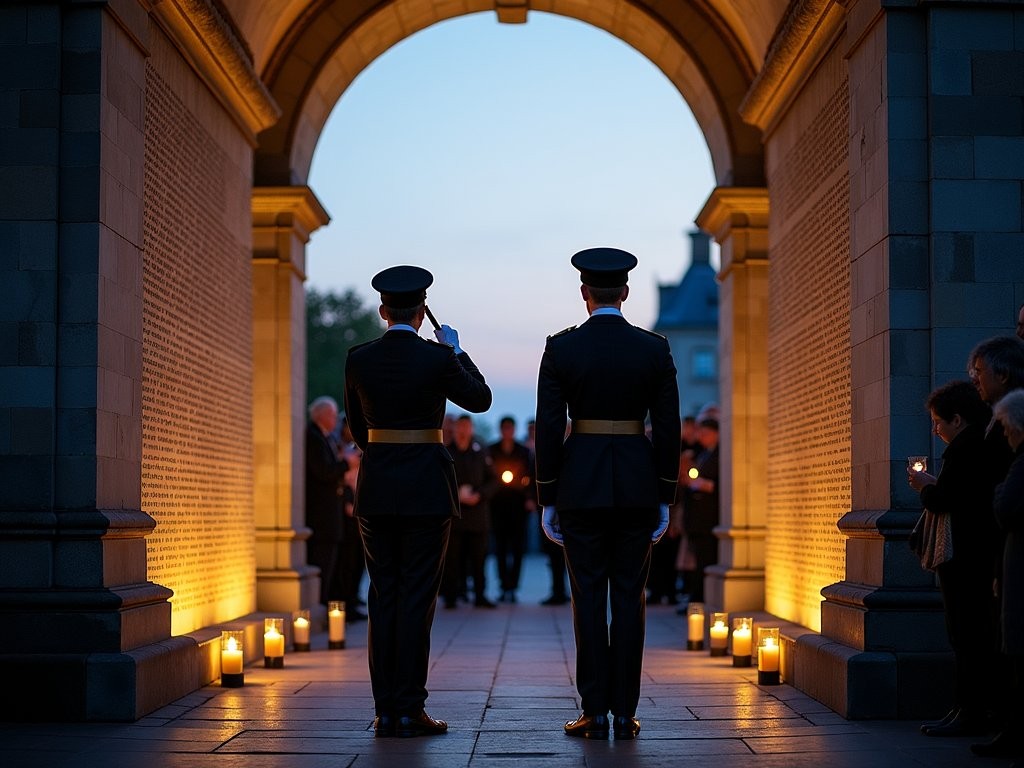
💡 Pro Tips
- Arrive at least 45 minutes early for the 8:00 PM Last Post ceremony to secure a good viewing position
- Visit twice if possible—once for the evening ceremony and once during daylight to fully appreciate the memorial's details
- Download the Menin Gate app which helps locate specific names among the thousands inscribed
In Flanders Fields Museum: Contextualizing the Catastrophe
Housed in the meticulously reconstructed Cloth Hall at Ypres' market square, the In Flanders Fields Museum offers what might be the most effective educational experience about WWI I've encountered anywhere. Named after John McCrae's famous poem, the museum approaches the war not as a collection of battles and strategies, but as a human catastrophe that transformed individuals, communities, and landscapes.
What makes this museum particularly valuable for students is its innovative approach to personal connection. Upon entry, you're given a poppy bracelet with an RFID chip that activates personalized stories throughout the exhibits. After inputting basic information about yourself (age, nationality, gender), the system connects you with historical figures who share some aspect of your identity. As someone with mixed heritage, I was particularly moved when the system introduced me to indigenous soldiers from Canada who fought in the European theater—a connection to my own Mi'kmaq ancestry I hadn't anticipated finding in Belgium.
The museum's multisensory approach creates an immersive learning environment. Rather than overwhelming visitors with artifacts behind glass, it combines physical objects with audio recordings, video projections, interactive maps, and atmospheric installations. In one particularly effective room, the floor periodically rumbles while artillery sounds play overhead, giving visitors a visceral (if greatly subdued) sense of the constant bombardment soldiers endured.
As an EMT, I was drawn to the medical exhibits that didn't shy away from depicting the horrific injuries and primitive field hospital conditions. These displays offer important context for understanding both the human cost of the war and the medical innovations it spurred. For students interested in medicine or public health, these sections provide powerful historical perspective.
The museum requires at least 2-3 hours to properly experience. I recommend bringing a portable charger for your phone, as you'll likely want to take photos and notes throughout your visit. The museum's lighting conditions can be challenging for photography, so having extra battery life ensures you won't miss documenting important exhibits for later reflection or assignments.
After emerging from the museum, I found myself needing time to process what I'd seen. The rooftop café offers both refreshment and a panoramic view of the rebuilt town—a visual reminder of resilience after destruction that provides a thoughtful transition back to the present day.
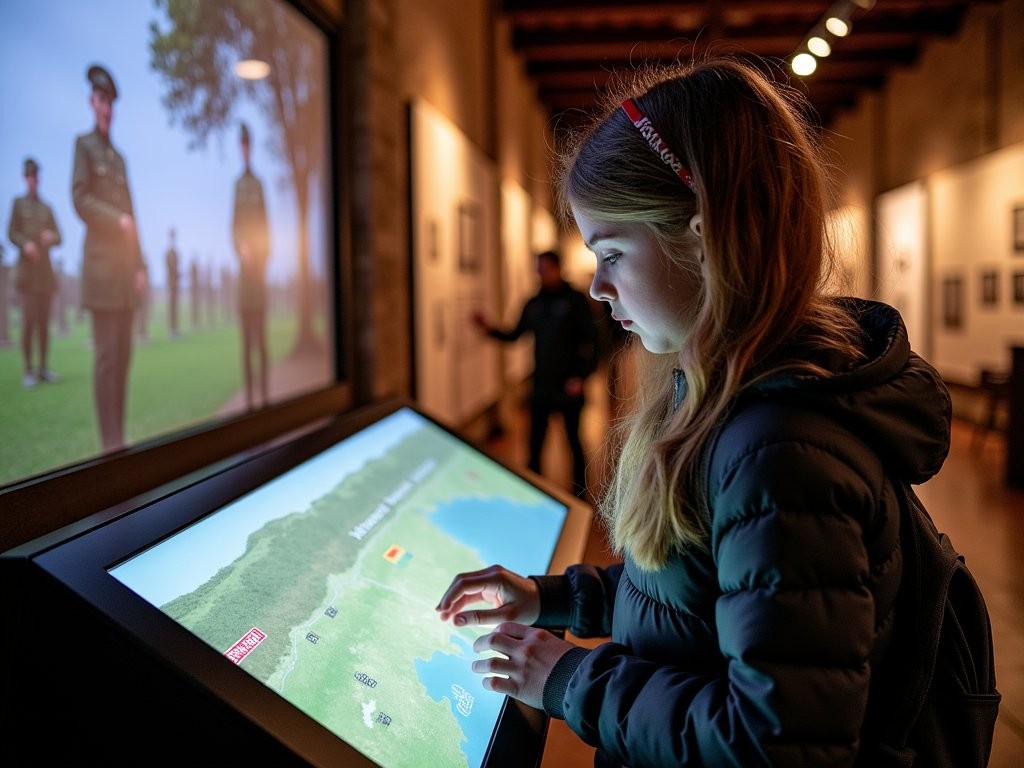
💡 Pro Tips
- Allow at least 3 hours for a proper visit—rushing through diminishes the experience
- Use the free audio guide for deeper context on key exhibits
- Visit early in your Ypres trip to gain historical context for the other memorial sites
Tyne Cot Cemetery: The Scale of Sacrifice
Just a short bus ride from Ypres lies Tyne Cot Cemetery, the largest Commonwealth war cemetery in the world. Nothing prepares you for the visual impact of 11,961 headstones arranged in perfect geometric rows across the gently sloping landscape. The white Portland stone markers stretch seemingly endlessly against the green backdrop of the Flanders countryside—a stark visual representation of war's toll that no statistic can convey.
I visited on a misty summer morning, which lent the cemetery an ethereal quality. The low clouds seemed to blur the boundary between earth and sky, creating what felt like a liminal space between past and present. This atmospheric quality makes summer visits particularly poignant, though the site is profoundly moving in any weather.
The name 'Tyne Cot' comes from British soldiers who thought the German concrete pillboxes resembled cottages from the Tyneside area of northern England. One of these bunkers forms the foundation of the Cross of Sacrifice that stands at the cemetery's center. It's a powerful symbol—the instrument of war literally supporting the monument to peace and remembrance.
What affected me most deeply was the visitor center's audio installation that continuously reads aloud the names and ages of the fallen. Hearing '19 years old... 20 years old... 18 years old' repeatedly drives home how young most of these soldiers were—many the same age as today's university students. For student groups, this creates an immediate point of connection and reflection on the parallels between their lives and those cut short a century ago.
The curved Memorial to the Missing at the rear of the cemetery bears another 34,957 names of soldiers with no known grave. Combined with those commemorated at Menin Gate, this represents only a portion of those who disappeared into the mud of Flanders. As a healthcare worker accustomed to documenting every detail of patient care, the concept of such massive loss of identity is particularly disturbing—these were not just casualties but individuals whose final stories remain untold.
I recommend bringing a travel journal to record your thoughts and observations. Something about the solemnity of Tyne Cot inspires reflection, and many visitors feel compelled to write down their impressions. For students especially, journaling can help process the emotional impact of such sites and create a personal record of their educational journey.
The Commonwealth War Graves Commission maintains Tyne Cot with meticulous care. Each headstone is kept pristine, and flowers bloom throughout the grounds—life persisting amidst monuments to death. This ongoing maintenance itself represents an act of remembrance, a refusal to let time erase these sacrifices from our collective consciousness.

💡 Pro Tips
- Take the free shuttle bus from Ypres or join an organized tour to reach the cemetery
- Visit early morning or late afternoon when the light creates dramatic shadows across the rows of headstones
- Bring a small notebook for reflection—many visitors feel compelled to write down their thoughts
Essex Farm Cemetery & Dressing Station: Where 'In Flanders Fields' Was Born
Some sites speak to me on multiple levels—as a traveler, as a healthcare worker, and as someone drawn to places where history pivoted on individual actions. Essex Farm Cemetery is exactly such a place. This relatively small cemetery holds profound significance as the site where Canadian physician Lieutenant Colonel John McCrae wrote 'In Flanders Fields' after witnessing the death of his friend in May 1915.
The preserved concrete bunkers of the Advanced Dressing Station where McCrae worked offer a rare glimpse into frontline medical conditions during WWI. As an EMT accustomed to modern emergency medicine, I found it humbling and horrifying to imagine providing care in these dark, cramped spaces while artillery fire thundered overhead. For students with interest in medical history or healthcare, these bunkers provide invaluable context for understanding both how far medicine has advanced and how the foundations of modern trauma care emerged from wartime necessity.
The bunkers have been partially restored and reinforced for safety, allowing visitors to step inside these historical spaces. The cool dampness, low ceilings, and minimal light create an immediate sensory connection to the past. Standing where McCrae would have worked on wounded soldiers, I could almost hear the echoes of pain and urgency that must have filled these chambers continuously.
What makes Essex Farm particularly moving is how it connects the famous poem—words most students have encountered in literature classes—to a specific physical location and human experience. McCrae wrote those immortal lines ('In Flanders fields the poppies blow / Between the crosses, row on row') while looking out at the very landscape visitors see today. The poppies still grow wild here in summer months, creating a living link to the imagery in the poem.
The cemetery contains 1,200 graves, including that of Valentine Joe Strudwick, one of the youngest known casualties of the war who died at just 15 years old. His headstone often has small tokens left by visiting school groups—a poignant reminder of how the war consumed even the youngest generations.
For students studying literature, history, or medicine, I recommend bringing a waterproof notebook to record observations regardless of Belgium's frequently wet weather. The connection between landscape, poetry, and medical history makes this site particularly rich for interdisciplinary learning.
A small interpretive center provides context about McCrae and his poem's enormous cultural impact. The site requires about an hour to fully appreciate and is easily accessible by bicycle from Ypres center—a pleasant 2.5 km ride along the Ypres-Yser canal that gives visitors a sense of the surrounding landscape that featured so prominently in soldiers' experiences.
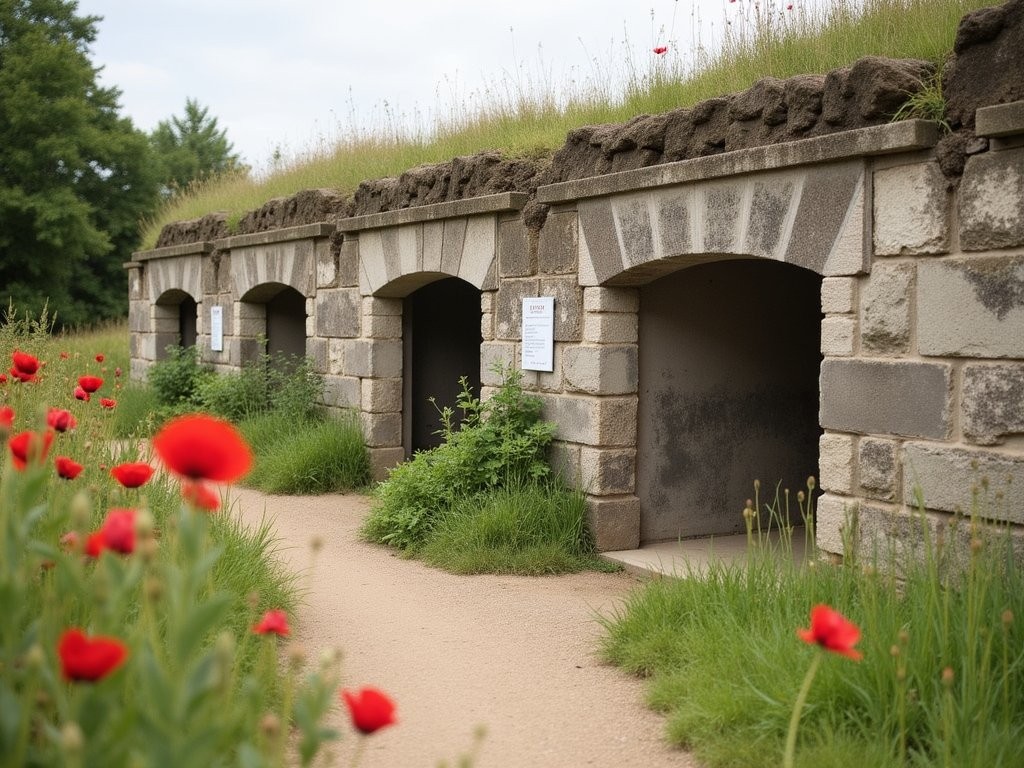
💡 Pro Tips
- Visit in late spring or summer when poppies might be blooming for the full emotional impact
- Bring a flashlight to better examine the interior of the preserved dressing station bunkers
- Read McCrae's poem before visiting to appreciate the direct connection between his words and this landscape
Hill 60 & Sanctuary Wood: The Scarred Landscape
While memorials and museums provide structured narratives of WWI, the landscape itself tells a more visceral story. Two sites near Ypres—Hill 60 and Sanctuary Wood—preserve the physical scars of battle in ways that make the conflict immediately tangible, especially for young visitors who might struggle to connect with events from a century ago.
Hill 60 isn't much of a hill by any natural standard—just a 60-meter elevation created from soil excavated during railway construction. Yet this modest rise became strategically crucial and bitterly contested during the war. Today, it remains pockmarked with shell craters and collapsed mine tunnels that have been deliberately preserved as a memorial landscape.
Walking these grounds, I was struck by how the earth itself seems to hold memory. The undulating terrain—unnatural in its rhythmic pattern of craters—creates an immediate visual understanding of artillery's impact that no textbook can convey. For students of military history, environmental science, or geology, Hill 60 offers a unique opportunity to study how warfare physically reshapes landscapes and how nature slowly reclaims these spaces.
A small but informative museum at Hill 60 explains the underground war fought here, where miners from both sides tunneled beneath enemy lines to plant explosive charges. The Australian memorial commemorates the men who detonated what was then the largest man-made explosion in history during the 1917 Battle of Messines.
Nearby Sanctuary Wood offers another dimension of the preserved battlefield experience. Here, privately owned trenches have been maintained in something closer to their wartime condition than the more manicured historical sites. The wood itself has regrown, but the zigzagging trenches cut deep into the earth remain, now lined with wooden duckboards that help visitors navigate the often muddy passages.
The Sanctuary Wood Museum (Hill 62) houses a remarkable collection of stereoscopic photographs showing the war in three dimensions. These images, viewed through antique stereoscopes, create an unsettling immediacy to century-old scenes of trench life and battlefield destruction. For today's students accustomed to virtual reality, these early 3D images provide a fascinating technological bridge to the past.
I recommend wearing sturdy waterproof hiking boots when visiting these sites, as the preserved trenches and crater fields can be muddy and uneven even in summer. The physical experience of navigating difficult terrain—even in a mild, tourist-friendly form—creates a small embodied connection to the soldiers' experiences.
As both sites involve significant outdoor exploration, I suggest allocating at least half a day for these visits combined. The contrast between the two—Hill 60's open crater field versus Sanctuary Wood's claustrophobic trenches—provides complementary perspectives on different aspects of the Western Front experience.
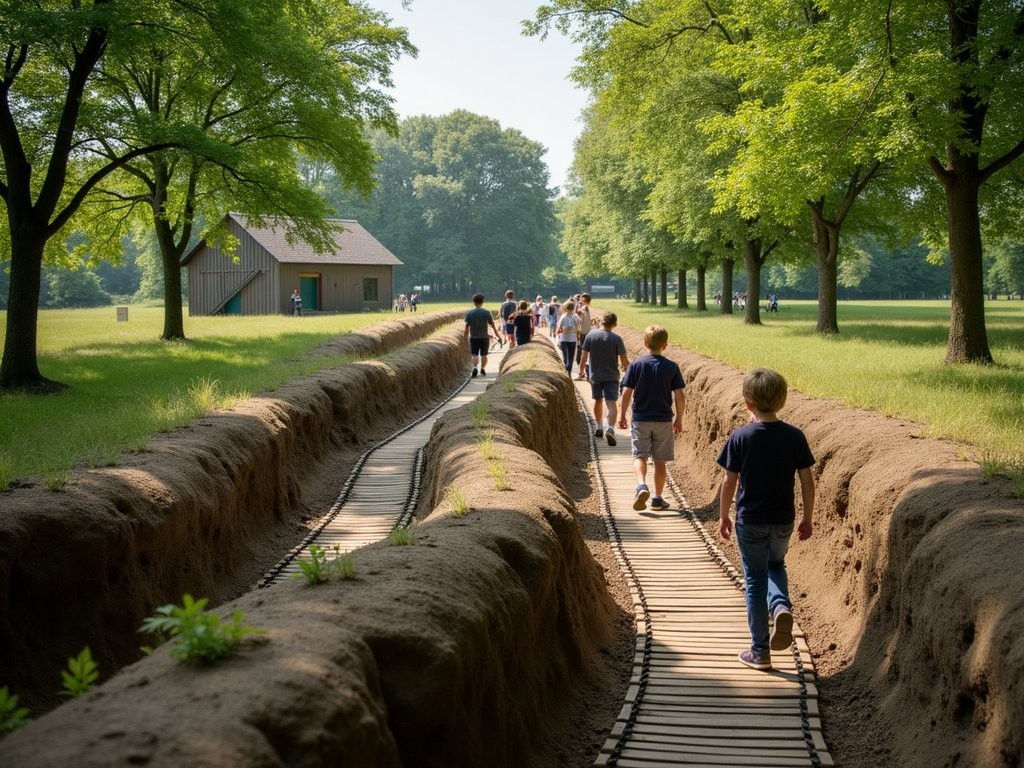
💡 Pro Tips
- Wear sturdy waterproof footwear as both sites can be muddy even in summer
- Bring insect repellent when visiting Sanctuary Wood, especially in warmer months
- Allow time for quiet reflection—these sites have a powerful emotional impact that shouldn't be rushed
Connecting Past to Present: Facilitated Reflection Activities
In my experience both as a healthcare provider and as someone who often travels to sites of historical trauma, I've found that structured reflection activities can transform passive sightseeing into meaningful learning. For students visiting Ypres, the emotional weight of these memorials can be overwhelming without frameworks for processing these experiences.
One evening after visiting multiple sites, I witnessed a group of international students participating in a candlelight reflection circle at the Grote Markt (main square). Their teacher had assigned each student to research one individual soldier from their home country who fought at Ypres. As darkness fell, they took turns sharing these personal stories, effectively bringing individual narratives out from the overwhelming statistics. This simple activity transformed abstract history into concrete human experiences.
The In Flanders Fields Museum offers excellent educational programs specifically designed for student groups, including guided walks that integrate history, literature, art, and ethical discussions about war and remembrance. These programs must be booked in advance but provide invaluable context with age-appropriate framing.
For self-guided student groups, I recommend creating your own meaning-making activities. One approach is a 'perspectives walk' where students are assigned different historical identities (soldier, nurse, civilian, etc.) and asked to view the same memorial from those different perspectives, then share their observations. This helps develop empathy and critical thinking about how the same events affect different populations.
Another powerful activity involves comparing contemporary news coverage of current conflicts with historical accounts from WWI. This creates natural discussions about media representation, propaganda, and how societies process war across different eras. The Peace Village hostel in nearby Messines offers workshop spaces where student groups can gather for such discussions.
For creative reflection, poetry writing at Essex Farm (where 'In Flanders Fields' was written) or art activities responding to the landscape can help process emotional responses. Many teachers encourage students to keep reflection journals throughout their visit, with specific prompts at each site.
To document these learning experiences effectively, I recommend a portable photo printer that allows students to immediately print and share photographs they've taken at various sites. These images can become part of reflection activities or group presentations, making the learning process more interactive and visual.
The Ypres Tourist Office provides excellent educational materials specifically designed for student groups, including workbooks with age-appropriate activities. These resources help structure the experience while still allowing for personal discovery and emotional response.
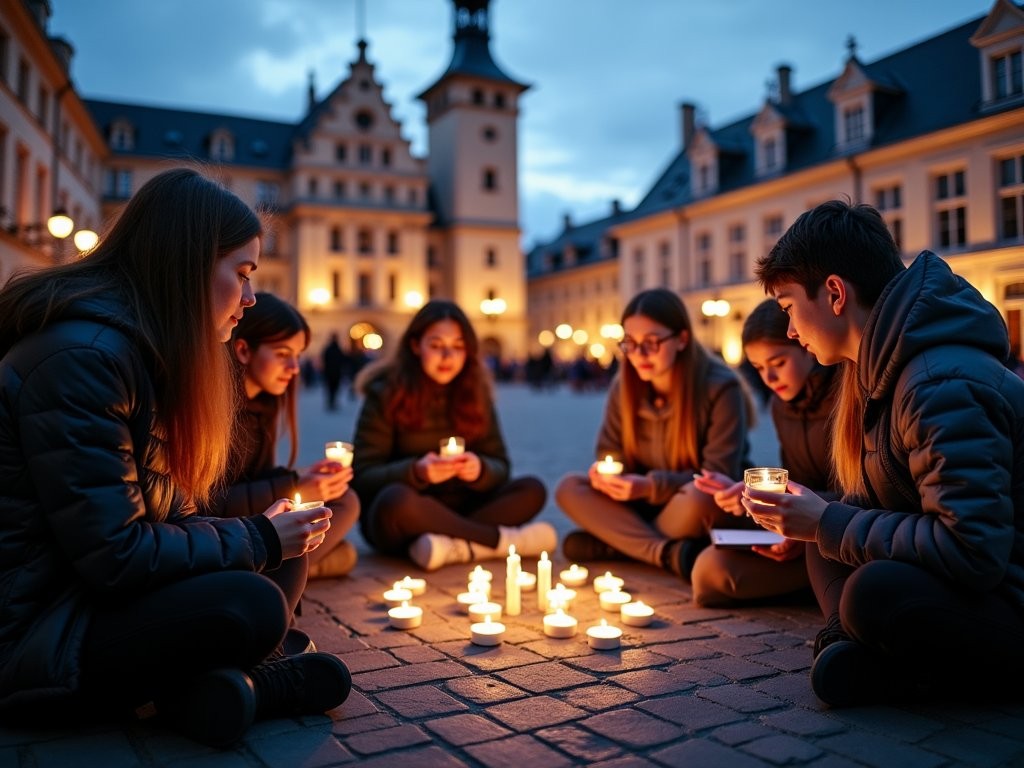
💡 Pro Tips
- Schedule dedicated reflection time after visiting emotional sites rather than rushing to the next destination
- Encourage students to connect historical events to contemporary issues to make learning relevant
- Use creative approaches like poetry, art, or digital storytelling to process emotional responses to difficult history
Final Thoughts
As I stood at the Menin Gate one final time before leaving Ypres, watching another generation of students absorb the weight of history, I reflected on how places like this function as medicine for our collective memory. Like the traditional healing practices of my Mi'kmaq ancestors, remembrance tourism isn't about dwelling in pain but about acknowledging wounds so they can properly heal. For students particularly, these experiences create touchstones they'll carry forward—moments when history transcended textbooks to become visceral and present. The memorial landscapes of Ypres offer something increasingly rare: spaces dedicated entirely to reflection, remembrance, and reckoning with difficult truths. In our hyperconnected world, these quiet encounters with the past provide essential perspective. Whether you're guiding students or exploring independently, approach Ypres not just as a destination but as a conversation across time—one that asks difficult questions about what we value, what we sacrifice, and how we honor those who came before us.
✨ Key Takeaways
- The nightly Last Post ceremony at Menin Gate provides a powerful ritual of remembrance that has continued almost uninterrupted since 1928
- Interactive museum experiences help students forge personal connections to historical events that might otherwise feel distant
- Preserved battlefield landscapes and trenches offer tangible encounters with history that complement more formal memorial sites
- Structured reflection activities transform passive tourism into meaningful learning experiences that connect past conflicts to present understanding
📋 Practical Information
Best Time to Visit
Late spring through early fall (May-September) for best weather and longer daylight hours
Budget Estimate
€300-450 per person for a weekend including mid-range accommodation, museum entries, and meals
Recommended Duration
Minimum 2 full days, ideally 3 days for deeper exploration
Difficulty Level
Easy - Sites Are Accessible And Close Together, With Good Public Transportation Options
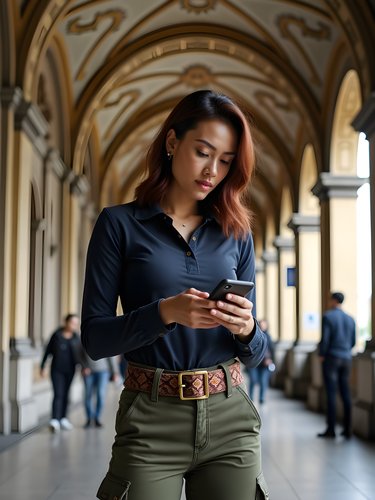
















Comments
tripguy328
Thanks for sharing this. My grandfather fought at Ypres - definitely adding this to my must-visit list.
smartone
I visited Ypres last month with my teenage son's history class. Was worried the kids would be bored but they were completely silent during the Last Post ceremony. Several were in tears by the end. These places have such power to connect young people with history in a way textbooks never could. The In Flanders Fields Museum was a hit too - all the interactive elements kept them engaged while learning. If you're visiting with family, don't underestimate how impactful these sites can be for all ages.
Nova Rice
This is such important travel content, Sage. For anyone planning a similar trip, I highly recommend reading some first-hand accounts before visiting. I brought along WWI poetry collection and found it incredibly moving to read certain passages while at the actual locations. Also worth noting that the Last Post Association offers a way to participate by laying a wreath during the ceremony if you book well in advance - we did this to honor my great-grandfather who fought there. It made the experience even more meaningful.
smartone
That's a beautiful suggestion, Nova. I never thought about reading poetry at the sites themselves.
winterphotographer
Your photo of Tyne Cot at sunset is stunning. The rows of headstones really drive home the scale of loss.
journeyqueen
Beautiful post! I'm planning to visit Belgium next spring and want to include Ypres. How much time would you recommend setting aside for all these sites?
Sage Dixon
I'd recommend at least two full days. One for Ypres itself (museum and Menin Gate) and another for the surrounding cemeteries and sites. Three days would be even better to really absorb everything without rushing.
journeyqueen
Thank you! I'll plan for 3 days to be safe.
Bryce Diaz
Sage, your description of the Menin Gate ceremony took me right back to my own visit three years ago. There's something profoundly universal about standing there as those notes echo through the air. I found myself next to an elderly gentleman who told me his grandfather had died at Passchendaele - seeing him trace the name on the wall was a moment I'll never forget. The In Flanders Fields Museum was equally powerful with those personal stories they've preserved. Did you make it out to Hill 60 or any of the preserved trenches? Those sites added another dimension to my understanding of the war.
Sage Dixon
Thanks Bryce! I did visit Hill 60 on my second day - those preserved craters are haunting. Really drives home the scale of destruction.
Bryce Diaz
They really are. The landscape still bears those scars a century later.
wanderwanderer
This post gave me chills. The Last Post ceremony sounds incredibly moving.
Casey Andersson
Essex Farm Cemetery was the most impactful for me. Standing where John McCrae wrote 'In Flanders Fields' after losing a friend... that poem has always moved me, but being in that exact spot was something else entirely. The preserved dressing station bunkers give you such a visceral sense of the conditions they worked in. I also recommend visiting Hill 60 if you have time - it's less visited but the preserved trenches and crater landscape really show the physical scars of war that still haven't healed after all these years. Sage, thank you for highlighting these important sites with such sensitivity.
tripmood
My grandfather fought in WWI. Reading this brought tears to my eyes. Thank you.
islandlover
Is it possible to visit all these sites in one day? Or should I plan to stay overnight in Ypres?
Casey Andersson
Definitely stay overnight! The Last Post ceremony alone is worth it. Plus, Ypres itself is a beautiful town with excellent restaurants in the main square. I stayed at a lovely B&B just a short walk from Menin Gate and used travel guide which had great walking routes connecting the sites.
islandlover
Thanks for the tip! Will definitely plan for an overnight stay then.
Venture X
Premium card with 2X miles, $300 travel credit, Priority Pass